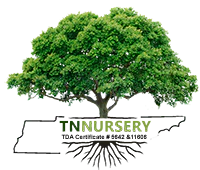Nurturing Biodiversity with Bee Balm, Milkweed, Butterfly Weed, Coneflowers, Sunflowers, and Yarrow
The decline in pollinator populations, particularly bees and butterflies, has raised alarms about the potential consequences for ecosystems and agriculture. These creatures play a crucial role in pollinating crops and plants, ensuring the reproduction of countless species. To combat this decline and safeguard biodiversity, it is essential to prioritize pollinators. One effective way to do so is by cultivating and conserving pollinator-friendly plants such as bee balm, milkweed, butterfly weed, coneflowers, sunflowers, and yarrows. We will explore these plants' significance and role in supporting pollinators.
Bee Balm: A Pollinator Paradise
Scientifically known as Monarda, Bee balm is a vibrant and fragrant perennial plant favorite among pollinators. Its tubular-shaped, nectar-rich flowers are beautiful to both bees and butterflies. Bee balm's high nectar content provides a vital energy source for these insects, while its tubular flowers are designed to accommodate their long proboscises. One of the most common visitors to bee balm is the bumblebee. Bumblebees are excellent pollinators for various plants, including fruits and vegetables. As they gather nectar from bee balm's flowers, bees unintentionally transfer pollen from one blossom to another, resulting in the plant's reproduction. Growing bee balm in your garden provides these essential pollinators with a continuous food source throughout the blooming season.
Milkweed and Butterfly Weed: Monarchs' Lifeline
Milkweed and butterfly weed, also known as Asclepias, are primary host plants for monarch butterflies, as the caterpillars feed exclusively on milkweed leaves. Without milkweed, monarch populations would suffer dramatically. Milkweed and butterfly weed produce clusters of vibrant orange, red, or yellow flowers that are a magnet for many pollinators, including bees and butterflies. Their nectar-rich blossoms serve as a vital food source for monarchs as they migrate across North America. By planting milkweed and butterfly weed in your garden, you can directly contribute to the survival of these majestic butterflies.
Coneflowers: A Colorful Pollinator Oasis
Coneflowers, also known as Echinacea, are beloved for their striking, daisy-like flowers and remarkable ability to attract pollinators. Notably, these perennials are beautiful and play a crucial role as a nectar source for bees, butterflies, and other pollinators. One of the standout features of coneflowers is their long blooming period, which can extend from early summer to late fall. This extended availability of nectar ensures pollinators have a consistent food source. Additionally, coneflowers have a high pollen production, making them a valuable resource for bees and other insects that collect pollen for their larvae.
Sunflowers: A Beacon for Pollinators
Sunflowers (Helianthus) are renowned for their towering stalks crowned with large, cheerful blooms that follow the sun's path across the sky. But beyond their visual appeal, sunflowers are an excellent choice for pollinator-friendly gardening. Sunflower heads are composed of numerous florets that contain both nectar and pollen, making them attractive to a diverse array of pollinators, including bees, butterflies, and even birds. Sunflowers are particularly well-suited for supporting native bee populations. Some bee species, such as bumblebees and solitary bees, are better at extracting pollen from sunflowers, thus enhancing their pollination efficiency.
Yarrow: A Pollinator Perennial
Yarrow (Achillea) is a hardy, drought-tolerant perennial that boasts clusters of tiny, tightly packed flowers in white, yellow, or pink shades. These flowers are a favorite among pollinators, especially smaller bees and butterflies. Yarrow's flat-topped flower clusters are composed of numerous small florets that offer easy access to nectar and pollen. This plant is beautiful to beneficial insects like parasitoid wasps and hoverflies, which feed on nectar as adults but are essential natural predators of garden pests in their larval stages. You can support pollinators and biological pest control by including yarrow in your garden.
Cultivating a Pollinator-Friendly Garden
Now that we've explored the importance of bee balm, milkweed, butterfly weed, coneflowers, sunflowers, and yarrow in supporting pollinators, let's discuss how to create a pollinator-friendly garden that prioritizes these essential plants.
- Select a Sunny Location: Choose a sunny location in your garden to plant pollinator-friendly plants, as they thrive in full sun. Sun-loving plants like sunflowers and yarrow will thrive in such conditions.
- Provide Diverse Blooms: Select various plants with staggered blooming times to support pollinators throughout the growing season. This ensures that pollinators can access nectar and pollen from early spring to late fall.
- Native Plants: Whenever possible, choose native plant species as they are well-suited to the local climate and provide the best resources for native pollinators. Native milkweed varieties, for example, are more beneficial for monarch butterflies than non-native species.
- Avoid Pesticides: To protect pollinators, it is essential to avoid using chemical pesticides and herbicides in your garden because they can harm beneficial insects and disrupt the delicate balance of your garden's ecosystem.
- Create Habitat: Incorporate other elements into your garden, such as water sources like birdbaths or small ponds, and provide nesting sites for native bees and butterflies. Bee houses and butterfly boxes are excellent additions.
- Maintenance: Regularly maintain your garden by deadheading spent flowers, controlling invasive species, and providing adequate watering. Healthy plants produce more nectar and pollen, benefiting pollinators.
The decline of pollinator populations is a pressing environmental concern that threatens ecosystems and food security. By prioritizing pollinators in our gardens through cultivating bee balm, milkweed, butterfly weed, coneflowers, sunflowers, fleabane daisy and yarrow, we can play a vital role in conserving biodiversity and ensuring the continued success of these essential creatures. Creating a pollinator-friendly garden benefits the environment and provides us with the beauty and wonder of observing these fascinating insects in action. It's time to take action and make a difference for our pollinators and the planet.




















































